Adrian Tomine and I were both English majors at UC Berkeley in the nineties. We undoubtedly roamed the corridors of the English department in Wheeler Hall at the same time, along with the future actor and fellow English major John Cho. We were all dreaming of telling stories or being in stories, and I wish there were some alternate past in which we all hung out and encouraged one another and said, Go for it, dude!
I would have been a fan of Tomine’s work back then, given how much of a fan I’ve been of his work since his early Optic Nerve comics. I have all of his books, which is more than I can say for almost any other writer. He’s a natural storyteller who brings together a clean line in his drawing to fit the spare lines of his stories. He’s also a master of the short form, from anecdote to short story and short novel. As someone who has suffered through writing a collection of short stories, I can testify that simply because a form is short does not mean it is easy. If anything, short forms are harder because the storyteller has to be concise and must know what to leave out as much as what to leave in.
Tomine knows what to leave out. The absences in his work, from what is not drawn and what is not said, make the presences stand out even more vividly. One thing absent from much of his earlier work was his status as an Asian American, which he begins to gesture at in his midcareer efforts, such as the story “Hawaiian Getaway” and the hilarious Shortcomings. What is refreshing about his approach to Asian Americans is his lack of sanctimony. Instead, he treats Asian Americans with his trademark astringency and satire. I’m all for it. I love my fellow Asian Americans, but our necessary convictions and beliefs can easily turn into pompousness and a painful lack of self-awareness. As someone who is both inside and outside of Asian America, Tomine sees through and draws from these blind spots, mixing sympathy with skepticism in just the right dose.
Now, in The Loneliness of the Long-Distance Cartoonist, Tomine returns with the storytelling style his fans have come to expect, but here he foregrounds his own Asian American life. Not that being Asian American exhausts the meanings of his life or his art—far from it—but it is one meaning, and he extracts a lot of humor from it, the way a dentist extracts a tooth. There’s some numbness and pain involved, but if there’s blood, you, the patient, and now the reader, don’t see it. This is the terrain of microaggression, sublimated response, and understated ambition that Tomine explores with the precise touch of a dentist gazing perpetually into a mouth, doing the crucial work of the quotidian. It’s lonely work, indeed, but by dwelling for so long and so thoroughly in the loneliness of his art, Tomine brings us close, terribly close, to the halitosis of being human, to the emotions we might prefer to keep at a distance.
INTERVIEWER
What do you like to be called as an artist?
TOMINE
I’d probably say “cartoonist.” But if I’m meeting my wife’s extended family and they want to say, Oh, we heard you’re a graphic novelist, then I’d happily go along with it.
INTERVIEWER
In a review of your previous book, Killing and Dying, Chris Ware said you write comics for adults. There’s still a lot of misunderstanding about the work you engage in. Is that frustrating?
TOMINE
Compared with how frustrating it used to be, it feels like we’re living in a fantasy world. Even ten years ago it was so different. Now there’s a pretty good chance that if I meet someone and tell them I’m a cartoonist or a graphic novelist, they’ll be interested and polite, as opposed to being confounded or put off or, like, protecting their children. The most interaction I have with random people is through my kids’ school. And in Brooklyn, it’s almost a boring, conservative job, like, Oh, he’s a graphic novelist? Well my dad’s a full-time protestor—or something like that.
INTERVIEWER
There’s a funny episode in The Loneliness of the Long-Distance Cartoonist where you’re the dad at your kids’ school getting asked to do show and tell about your work. And you do a poop sketch. But some brat tells a story to their parents, and then you’re humiliated by this email to all parents saying, “There was an incident today … ”
TOMINE
I probably made it sound much worse than it really was.
INTERVIEWER
Well, Loneliness is a very funny book. I think it’s probably your funniest work to date, as well as your most explicitly autobiographical. And yet in one interview, you mention how too much, perhaps, is made of artists and their relationship to their work, how sometimes it veers into self-promotion, and you have an ambivalent relationship with that. So why did you do Loneliness, which seems like a very autobiographical work?
TOMINE
When I say I think there’s maybe too much of an interest in figuring out the relation between artist and art, I’m speaking as a self-conscious artist who sometimes feels intruded upon. But as a reader, I’m just as guilty of that as anyone else. And for whatever reason, I personally respond to art where I feel the artist is telling me something about their specific life through a fictional story. I’ve been trying to do that, to some degree, with every comic of mine that’s ever been published. Especially in the corner of the medium that I exist in, there’s this long tradition of the confessional, autobiographical comic. It’s something I’ve always connected with and been a fan of but also been a little apprehensive about doing myself. After I finished Killing and Dying, I didn’t want to just immediately put out another book of that same exact kind of material. So I made a conscious choice to try to do something different in terms of art style, tone, and focus.
INTERVIEWER
It seems like cartoonists often draw and write about their anxieties as cartoonists—the difficulty of the work, the neglect they experience. Is difficulty a preoccupation for cartoonists?
TOMINE
I think there’s a little bit of a generational divide. It’s tapered off quite a bit. I think the cartoonists who are older than me tend to have a preoccupation with difficulty. They were deeply impacted by the underground comics movement that started in the sixties, and that’s where a lot of the focus on the artist’s own anxieties and whatnot blossomed. That type of work made such a profound impact on the medium for people of the right age—which is totally different from people younger than me who, in some cases, feel no connection to and are actually kind of disdainful of that material. I’m totally prepared for a reaction from younger readers of like, Stop whining, how hard can your life be, look at what you have, being a cartoonist is fun.
INTERVIEWER
Is writing and drawing together harder than just doing one or the other?
TOMINE
The easiest way for me to create art or to express myself, really, is through making comics. The times when I’ve given myself the challenge of isolating one element and just creating an image or just writing have always been more of a struggle. I think that has to do with how I learned to process the world. From a very early age, I was always thinking of the world in terms of comics.
INTERVIEWER
Early in Loneliness, you depict yourself as a little boy in a Fresno classroom, discussing your early artistic ambitions and your take on comics, and you’re focusing on superhero comics at this time. At what point did you shift from wanting to do superhero comics to doing what you do now?
TOMINE
I was about ten when I realized I had become a comic book collector and not a comic book fan. Out of a sense of ritual and obsessiveness, I would still go to the comic book store every week, and they would hand me the new comics I’d requested, and I would just blindly pay for them. And then I would go home and kind of joylessly flip through them out of obligation. I was fortunate enough to have access to a comic book store that also had a different section, one that I had never ventured into because I thought it wasn’t for me or it was scary. But nothing was stopping me. So I was able to just walk over there, and instantly, my life changed. I discovered Love and Rockets, which was the perfect gateway drug. I could sense that the Hernandez brothers grew up loving the same stuff that I did, and so I recognized some of their inspirations and influences. But I could also see that their work was much cooler, and much more “mature” than the superhero comics I’d been reading, and that really excited me. Love and Rockets led me to so many other great comics and artists I’d never heard of before. After that, I made a complete shift in my taste and started exclusively buying comics that were probably a little over my head, a little too adult. But I’m grateful that I had parents who trusted my judgment because those comics are completely responsible for where I am now.
INTERVIEWER
In other interviews, you’ve talked about how your writing and drawing have always taken place against a sense of your own inadequacy. In Loneliness, there’s a funny episode where you’re interviewed by Terry Gross. And the result is, in your opinion, disastrous. Your inner voice tells you to jump in front of a subway train. Obviously you didn’t do that, so is the unwillingness to give up and listen to that voice what makes you a successful artist?
TOMINE
I don’t think of myself as a very determined person in any other way. In general, I’m very happy to give up if something is too difficult. But I feel like there’s something about creativity, and just making comics in particular, that I keep coming back to. For a long time I was realistic enough to think that making comics would be a hobby throughout my life, that I would have to make money with a different job and do comics when I came home at night. And I felt okay with that because I’d spent my whole life that way—I’d go to school, and then as soon as I was freed from it, I would come home and start working on comics. I don’t know where it comes from, but I feel like that’s the only aspect of myself that is surprisingly determined and resilient.
INTERVIEWER
The title of your newest book also alludes to the loneliness of the long-distance runner. Is loneliness difficult for you, or is loneliness something that you’re comfortable with—or something that’s even desirable for an artist to be able to live with?
TOMINE
One of the many things I’ve learned as a result of the past four or five months is that loneliness was the thing I hated most until it was taken away from me. Within the first week of homeschooling, I realized that this was the first time since childhood that I didn’t have an extended period of time every day by myself, in a room, being creative. I used to think of comics mainly as a way to send a message in a bottle out into the world and maybe make friends or find a girlfriend—a way of escaping loneliness. And now, at least, answering you today, I feel like loneliness is really important to me, and it’s definitely a big component of creativity, but also mental health. I guess there’s a distinction between being alone and loneliness, but I actually do miss loneliness—that sort of longing was something that drove me creatively and also motivated me to evolve as a person.
INTERVIEWER
Near the end of the book, you write, “For most of my life I felt like anything other than working on comics was a distraction and that’s insane.” Is dedication to work a kind of insanity, or could we also say it’s a kind of spirituality? Spiritual people go off and isolate, they endure loneliness, they suffer and all kinds of things. To me there’s a spirituality in an artist’s relationship to their art. They’re willing to sacrifice and endure for whatever it is they find to be beautiful.
TOMINE
I would be happy if someone said that about me, but I think the truth is that as much as I love working and being creative and having time alone, art has been a form of avoidance for me throughout my life. It was sort of a preemptive strike against personal rejection or exclusion. I grew up thinking art was the one thing that I would always be able to count on, that couldn’t be taken from me, that I wouldn’t be separated from. And unfortunately, that carried through even into my adulthood, where I’d be in a relationship with someone and somewhere in the back of my mind I’d be thinking, Well, we might break up, she might get sick of me, so I better keep my priorities straight and focus on these comics here. It’s something I try to fight even now, especially having young kids, where you feel like their lives are zipping by so quickly and you don’t want to miss too much.
INTERVIEWER
You’ve mentioned how being a father has increased your sense of empathy, reduced your sense of narcissism. Did it also change your relationship to other key elements artists have to deal with like love, life, death?
TOMINE
I really credit this stage of my career—which I would say consists of The Loneliness of the Long-Distance Cartoonist and Killing and Dying—to the arrival of my kids. Even if someone didn’t know anything about my personal life, they might sense a shift from my earlier books to these current ones. The earlier work is tied to all these things that aren’t part of my life anymore. I was almost hitting a point where I felt obligated to keep up the charade. I thought, The reason people like my work is because it’s about being young and single and living in California, and I better keep pumping this stuff out. Until the kids came along, I didn’t have the confidence to say, I’m just going to start writing stories about adults. Becoming a father opened up these other parts of my brain that I didn’t know existed.
INTERVIEWER
Near the end of Loneliness, you suffer a medical emergency that makes you reflect on your life and art in a great monologue. The book almost ends with the kind of ambiguous moment for which your stories are well known—or maybe controversial, depending on the reader. But then there’s a coda that does provide a kind of closure as you turn your angst into art, which brings the book full circle. And to me, that just makes explicit what I’ve always felt about your endings, which is that even though they are typically open-ended, there was always an implicit closure about art itself. The form of the story—of the work and the drawing and the writing and the complicated pleasure it brings to the reader and maybe to the artist—is the closure. Do you think your art and its process provide the closure you need, even if it’s a closure you have to constantly renew with every project?
TOMINE
That’s a good way to put it. I think the response to my endings caught me by surprise when I was younger, because it wasn’t anything I was doing intentionally or perversely, as I was sometimes accused of. There were definitely people who seemed to imply that I arbitrarily would remove the last bit of a complete story just to be frustrating or cool or something like that. But the truth is that there’s no aspect of my work I agonize over more than the endings. None of them have ever been random, as if the curtain dropped and I just gave up. They’re all deeply considered and perhaps overanalyzed. To me, as a creator, and also in terms of work that I enjoy as a viewer or a reader, a somewhat open-ended or ambiguous or surprising ending sends a chill up my spine more than just a perfect conclusion wrapped up with a tidy bow.
INTERVIEWER
In a review of your book Shortcomings, Junot Díaz describes the power of your work as coming partly from making political or historical issues secondary to a kickass story. You’ve said you’re not interested in statements or didacticism in your work, just honesty and realism. You also have said you’re not interested in identity politics. But when the issue of being a quote-unquote Asian American artist comes up, you already are one, simply by definition of being an Asian American. So content is less important to this definition of being an Asian American artist than simply being an Asian American, right? The fact that you’re Asian American means that anything you do is implicitly Asian American.
TOMINE
The first time I heard someone make that point, it felt like a real revelation. I think it’s great to open up the notion of what it means to be a blank artist. To say that by being who you are and by creating art, you are by definition an Asian American artist—that’s really liberating. And it’s something I didn’t feel I was afforded for a long time. I could tell that there was a lot of expectation from Asian American journalists and critics for me to be more issue-oriented, to make big statements, to tackle things head on, and that anything less than that was a rejection of responsibility. That kind of had my head spinning for a long time.
INTERVIEWER
I want to ask a question that may be offensive or irritating in its assumption. You’re Japanese American, but your work thus far hasn’t dealt explicitly with Japanese American history. The answer could simply be that you’re not interested. We don’t expect all white artists to write about George Washington, for instance. But I’m wondering if another possibility is whether Japanese American history is too mired in the problem of statements and didacticism. Is it too hard for you to approach that history with the honesty and realism that could help you overcome the explicit didacticism and politics that you find so uninteresting?
TOMINE
I think you’re definitely onto something. In addition to that, there’s a bit of feeling overwhelmed and not knowing if my ability and especially my chosen art form are the best way to present that material to the world. I don’t think there’s anything wrong with deciding you’re not the best person for a certain challenge, especially with a topic that needs to be handled just right. But in addition to the anxiety, there’s a part of my brain that can’t help thinking, Well, what if I did a story about a guy who didn’t go to the incarceration camps and was a fugitive? Or, What if I focused on just one day in one family’s life? I’m always thinking about a side door into the story. I can’t get my brain to work in the traditional, straightforward, solemn narrative that’s generally applied to serious, historical material.
INTERVIEWER
I think sometimes about the fact that not every Japanese American was sent to the camps. Many Japanese Americans were not on the West Coast at the time. What happened to them? No one talks about that. So the problem with this issues and didacticism approach is that it tries to fit a huge multiplicity of experiences into one historical experience, which they may have shared, but which doesn’t exhaust the entire possibility of their lives. And part of the issue I think might be that the mechanism of American culture and art and its reward and recognition system are designed partly to put people into these categories. So you’re Japanese American, you should be doing Japanese American history, for example. And if you do, maybe you’ll get rewarded for it in a very different way. I think about how Colson Whitehead wrote a bunch of interesting books, but when he wrote about slavery, in The Underground Railroad, he won the Pulitzer Prize. It’s a great book, but that’s what he gets the Pulitzer Prize for. But at the same time comics can grapple with this kind of history. Obviously, Maus is a great example of its own strange thing about a difficult history.
TOMINE
If you nose around at the bookstore a little bit, you’ll see that for every Maus or Persepolis, there’s like a hundred hideous books about a historical event or social protest moment or something that should be treated with great reverence, and it’s disgusting—like it actually denigrates the subject matter with its horrible aesthetic.
INTERVIEWER
I totally agree. I can’t get over history in my own work, and I find your not dealing with history to be really liberating. Or it may not be that you’re liberated from history so much as you’re working through your own obsessions, and history just doesn’t happen to be one of those.
TOMINE
I think there’s something to be said about the privilege of being a fourth-generation Japanese American growing up on the West Coast. Of course my parents and my grandparents were directly, horribly affected by the camps, but for whatever reason, I still don’t think the topic of race was as much of a presence in my life as it might’ve been for other kids. It’s possible that my family had been so deeply affected by issues of race that they instinctively insulated me and my brother from it to a degree, and strove to give us a carefree life, at least in that regard.
INTERVIEWER
In Loneliness you discuss the various microaggressions you’ve endured personally, which you treat with honesty and realism but also a lot of humor—Frank Miller refusing to say your name at an awards ceremony, a rejected stalker who calls you “an overrated Chinese asshole,” an unnamed comics artist who mistakes you for a computer repair man at Daniel Clowes’s house, a famous writer you approach whose response is to tell you he loves jujitsu. You’ve dealt with race before, but you’ve only recently started to deal with this issue of racial microaggressions in your life and career autobiographically. Is that because it was difficult to write about, or is it that you just didn’t have the right project to talk about these things?
TOMINE
I think that for me to use that raw material in something other than this book, I would have had to devise some fictional premise where it’s like, There’s an Asian American ballet dancer and when he goes to the ballet convention, a more famous … To construct a whole world where those same jokes and those same experiences could be used seemed unnecessarily complicated. So I think I was holding onto them for when I could just actually say, These particular things happened to me, especially because they are so odd and bizarre that it seemed important to me that the reader approaches it knowing that it’s essentially nonfiction, rather than just some weird thing that I invented.
INTERVIEWER
You don’t actually respond with anger to any of the incidents in Loneliness except when a random stranger harasses you and your family and lectures you about your parenting. You explode in anger and say, “I’ll spank YOUR ass!” Is anger a hard emotion for you to deal with autobiographically?
TOMINE
Not just in my work but in real life. It’s a point of contention in my marriage to a degree because my wife is from an Irish family from Brooklyn, and they are very openly expressive in both positive and negative emotions. I think my tendency is to internalize and minimize what I call anger, what my wife would call rage. She senses that it’s in me, and it annoys her that I would be stifling it to such a degree. But to be clear, I didn’t edit any acts of rage out of the book. It’s not like in reality the guy said “I love jujitsu” and then I screamed in his face and threw my glass on the ground or something. I really did just stand there awkwardly for a few minutes before shuffling away.
INTERVIEWER
In the New York Times Book Review, Ed Park said that “rage and fragility” are characteristic of your work. If you can’t express your rage explicitly, do you think that suppressed feeling is part of what gives energy to your work?
TOMINE
I think so. That’s definitely the case with a lot of my favorite cartoonists! Also, I think this book in particular would be a lot less palatable if it were infused with extreme rage throughout. And it wouldn’t be representative of me. There’s a way of reading this book that makes it seem like I’ve just been seething with pent-up hostility about all these experiences, and this is my way of getting back at those people. There might be like one degree of truth to that. But it’s also that time has affected my perception of these things. Many off the critical remarks that I quote from other people or from sources, I agree with now. I guess it just depends on how you read the work. But in the end, at least to me, the person I’m most critical of in the book is myself.
INTERVIEWER
Although you haven’t dealt with Japanese American history, you have touched on Japan in your work, and you’ve also written introductions for American reprints of manga by Yoshihiro Tatsumi. Can you talk about your relationship to Japan?
TOMINE
It was a constant background presence throughout my childhood, but I never visited as a child. However, there was never any doubt that that was my family’s background, that that was the culture we loved the most, sometimes in competitive ways. The one time I did go to Japan was for two weeks in 2003, and much to my surprise, it was one of those experiences where I landed and had this feeling I didn’t believe was possible, a feeling of belonging and connection and ease. Family members told me, People are going to spot you as an American from a mile away, no one’s going to speak Japanese to you, they’re going to come up and try out their English on you, they’re going to hand you the tourist menu when you sit down at a restaurant. And that turned out not to be the case at all. People just started speaking to me in Japanese and then probably thought I had brain damage or something when I couldn’t respond with more than a few simple words. I just felt like any kind of affinity or connection to the culture that I might have imagined was exponentially increased with the real experience of being there.
INTERVIEWER
Chris Ware, in his review of Killing and Dying, talked about the difficulty of adult comics achieving a certain level of critical recognition from the non-comics world. He said that in the comics world, nonfiction has been more successful at achieving wider recognition—I’m thinking of Maus and Persepolis. But he said Killing and Dying might be the first book of fiction to achieve that level of recognition for comics. Do you agree?
TOMINE
I think Killing and Dying definitely didn’t penetrate the public consciousness in the way that Maus or Persepolis did—you could just look at the Amazon rankings and see that—but I appreciate the compliment. It means a lot to me. And of course it would be nice if it were true in some way, but I understand why it’s not.
INTERVIEWER
I, as an outsider to the comics world, thought it did. One of the reasons I love your work is that you’re a great creator of comic books, whatever you want to call them, but also literature. I await your books with a great degree of anticipation because I think they achieve what great art is supposed to do, which is to deliver what John Updike called “the human news” in whatever format that it needs to arrive in. The culture simply hasn’t caught up with your work. Eventually that will happen! In the interim, you’ll have more material to draw from in this idea that you’re an artist maybe just a step ahead of your time.
TOMINE
Thank you. That’s nice of you to say. We’ll see. I don’t know. I don’t feel like I’ve been cheated or I’ve missed out on some audience that I just haven’t been able to reach. I’ve been able to do exactly the kind of work I wanted to, and to be honest, I’ve actually been surprised by the reception I’ve received. So I don’t want to make it sound like I’m sitting around thinking my work should be as popular as Maus. I don’t think that at all. I think it’s reached an appropriate readership.
Viet Thanh Nguyen is the author of the Pulitzer Prize–winning novel The Sympathizer and its forthcoming sequel The Committed (March 2021).
All images courtesy of Drawn & Quarterly.
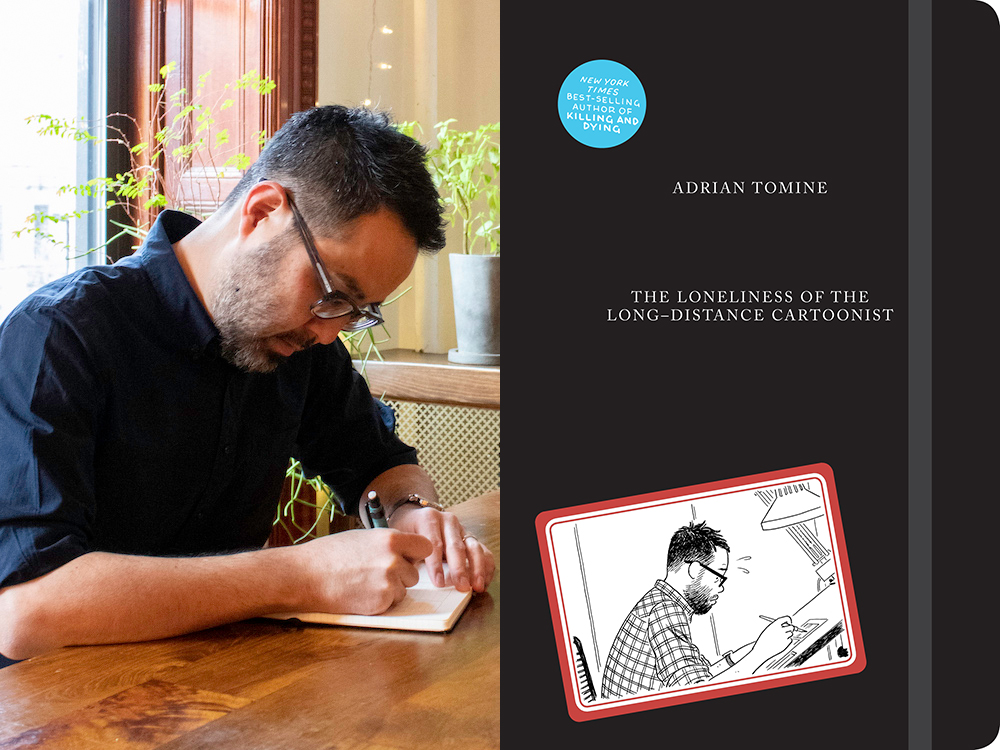
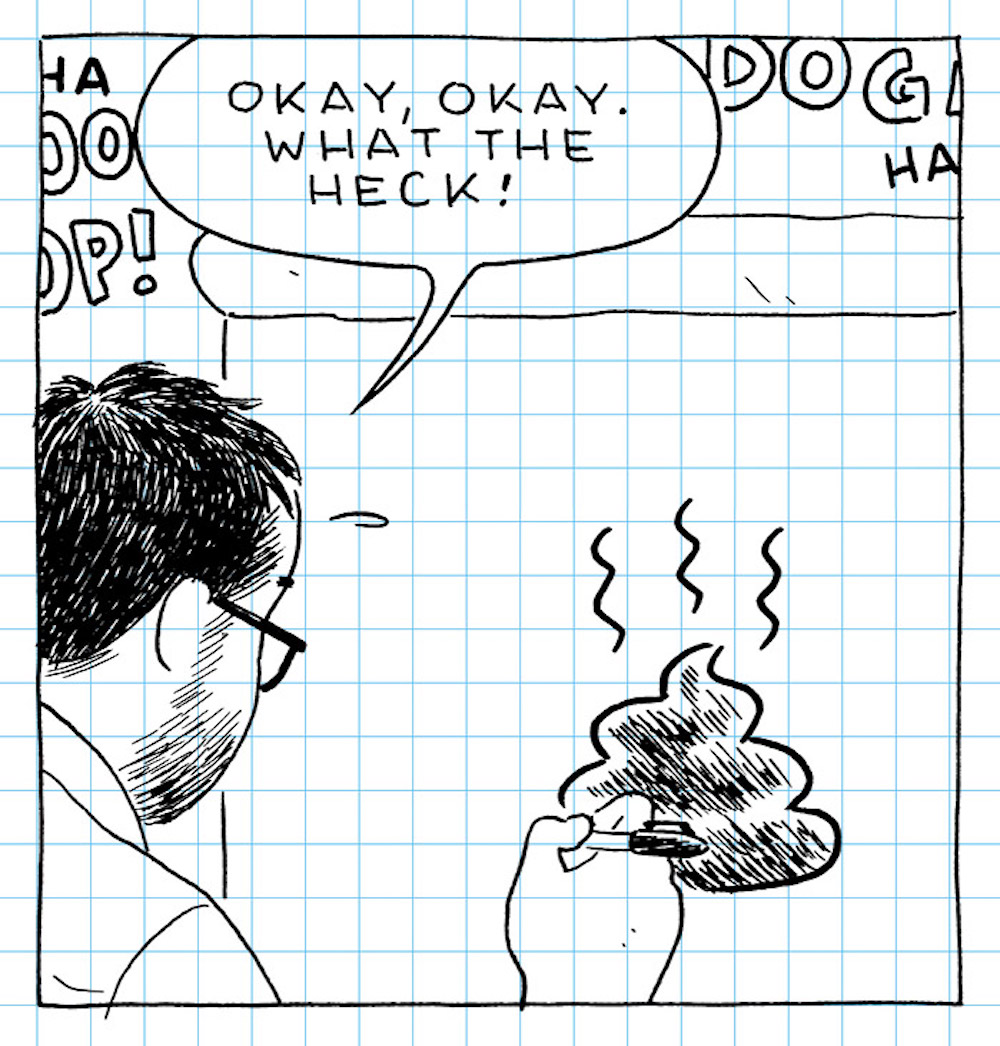
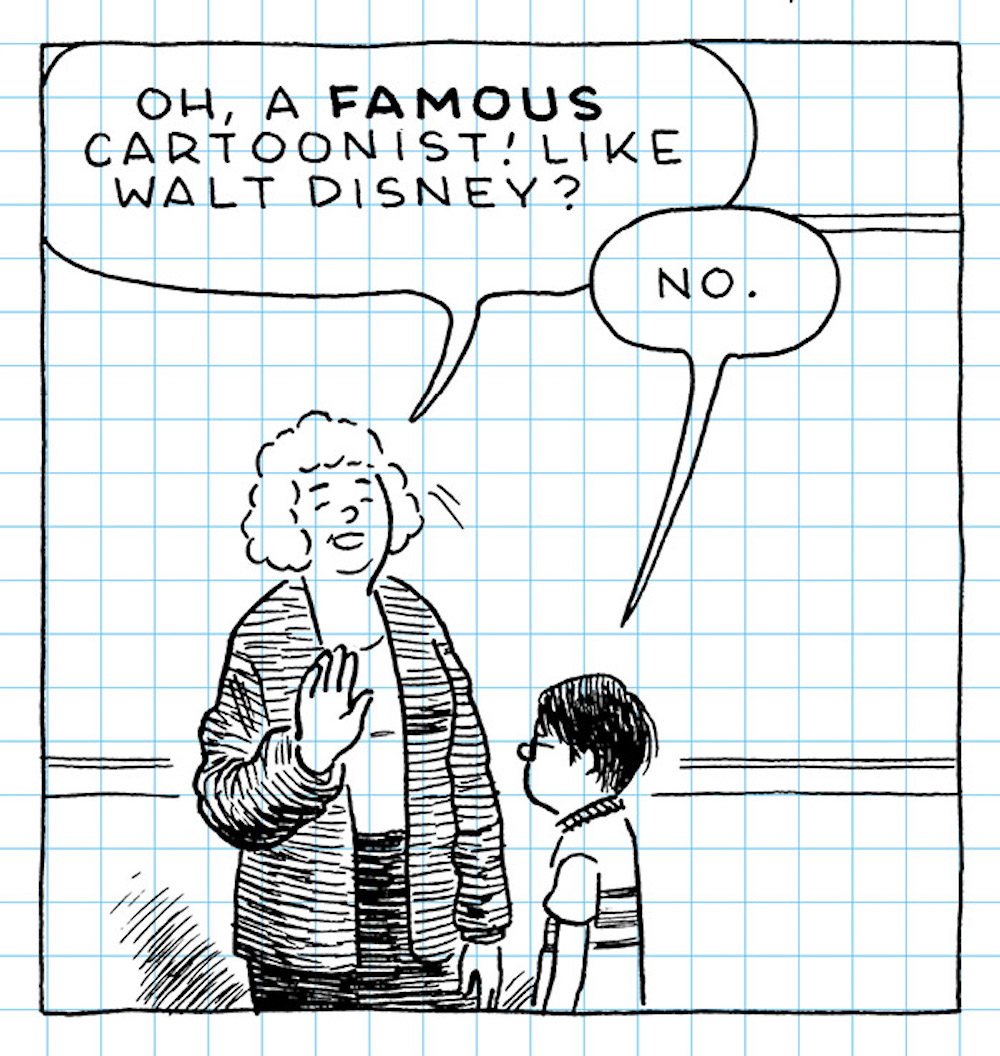
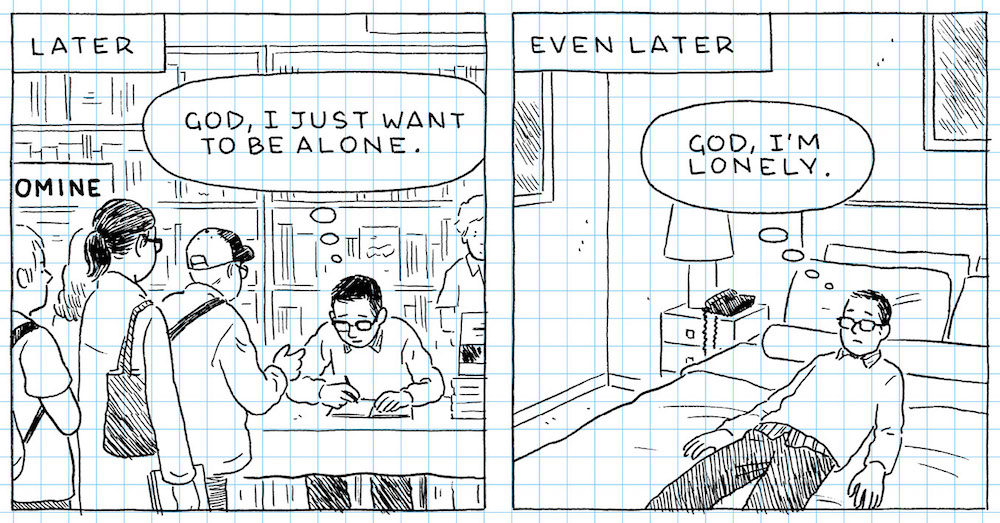
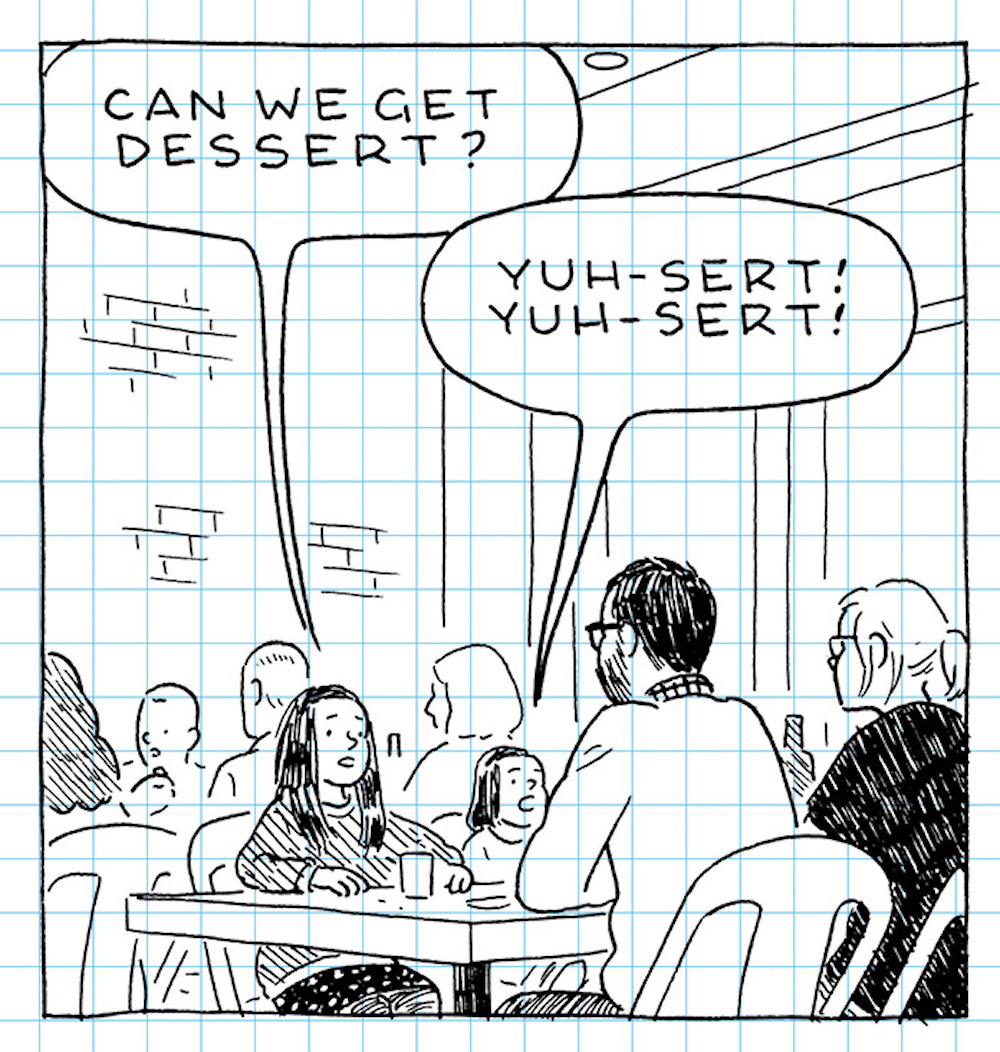
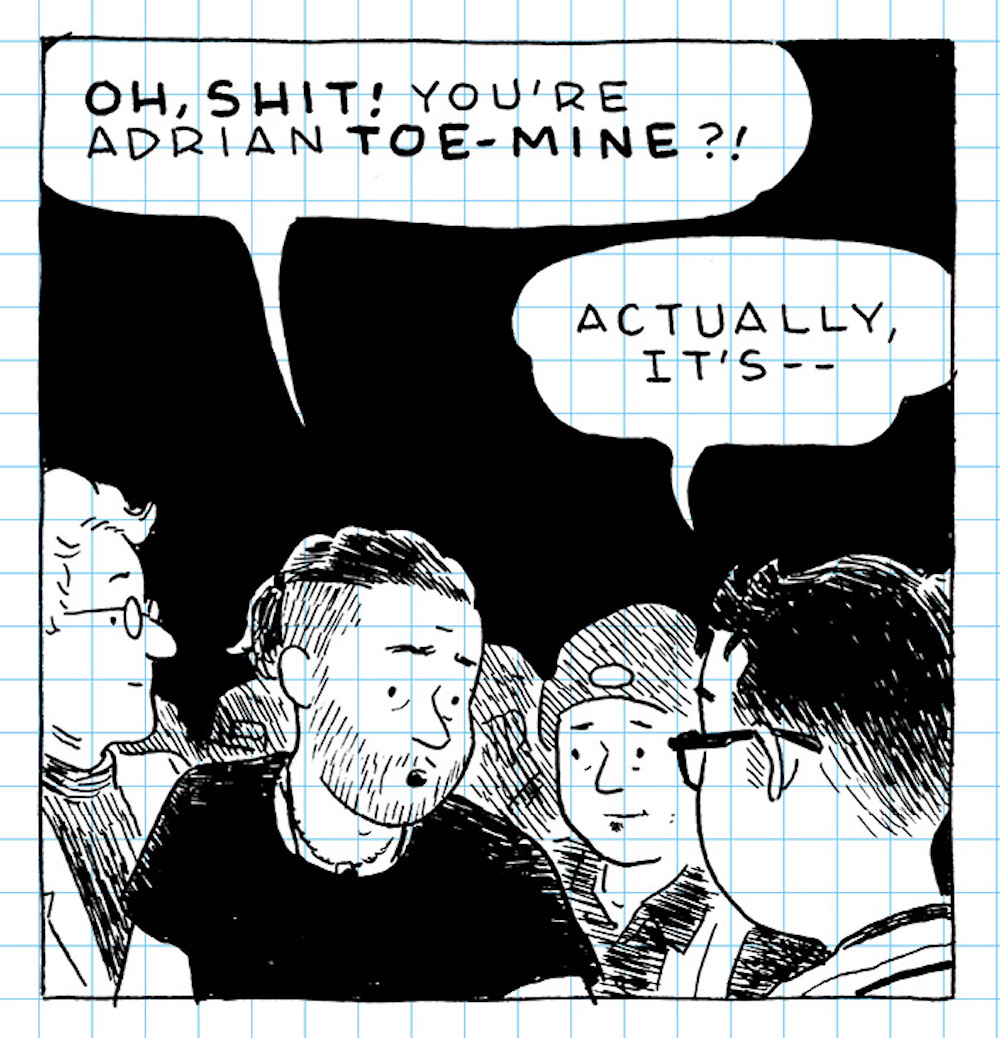

No comments:
Post a Comment